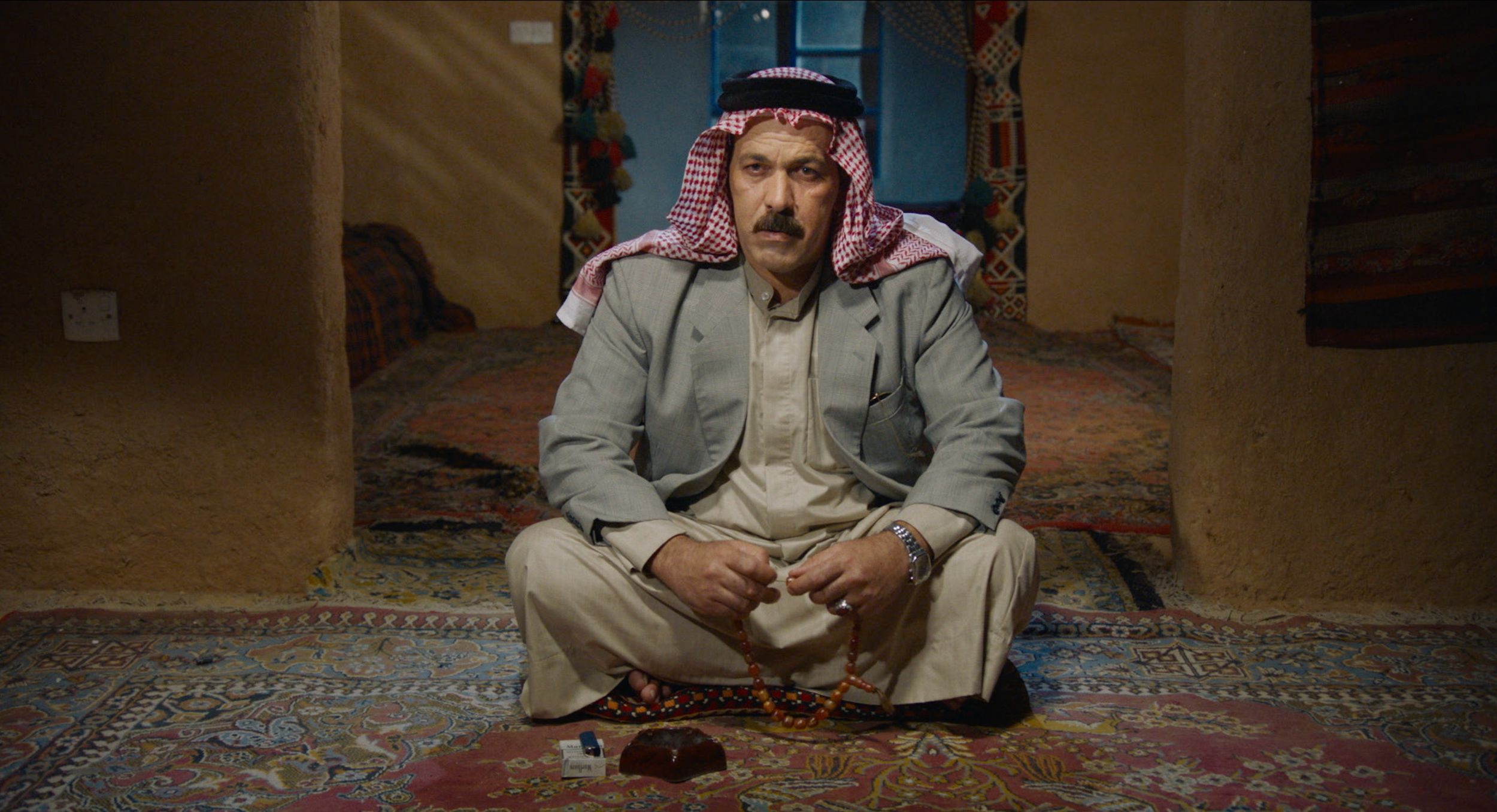interview
One of the most anticipated titles at this year’s International Documentary Film Festival Amsterdam (IDFA), Halkawt Mustafa’s Hiding Saddam Hussein delves into the story of Alaa Namiq, the farmer who hid the former dictator of Iraq for 235 days in a village south of Tikrit, as thousands of US troops searched for him after he was toppled in 2003.
Throughout the film, Namiq speaks about how his house was picked as a hideaway for Hussein and had no choice but to assume the role of presidential hairdresser, physician, and bodyguard. Something akin to a friendship seemed to have grown between them as they ate together and helped wash each other’s backs. The film, a Norwegian-Iraqi co-production, boasts extensive archive footage along with re-enacted scenes.
Projektor spoke to the Norwegian-Kurdish filmmaker about the film’s long production process and how making this project taught him the importance of waiting.

Projektor: When and how did you start working on this film?
Halkawt Mustafa: I think everything started out of my curiosity about the story behind the “hole” [where Saddam Hussein hid]. I was very interested to find out what happened and what brought Saddam to be found in 2003. I was searching for the man hiding him, until I discovered in a story published by The Washington Post that someone came up with his name. I began searching for him, and I spent two years to find him. It took me 12 years in total to make this film. So I was driven by curiosity but, most importantly, I’m Kurdish—so all my family was fighting against Saddam Hussein’s regime. When I came to Norway, I realised this was one of the stories I really wanted to tell.
How did you convince your producers to get on board the project?
Certainly, [they were convinced by] the originality of the story I wanted to tell and of the most challenging aspects of this project. It was really easy to sell but very hard to make; I remember that when we pitched at IDFA, the reaction was quite “wow.” But how to keep that wow was the problem. And, we’ve got a storyteller [in Alaa Namiq] but there were no pictures of him. So I prepared a calendar from April 22 to December 31, 2003, and I searched each day [for] what was happening outside of the farm, in both Iraq and the US.
When did you enter pre-production?
I started in 2014, and we shot the first interview with Alaa Namiq in 2016. Then the problem was that the Islamic State took over the Iraqi village he came from. So we changed our meeting place. And in the meantime, horrible things happened to his farm too. That’s why it took so long to finalise it.
How did you manage to gain access to Namiq and build trust?
In the beginning, he didn’t want to talk and didn’t say anything about the story. But of course it was required by my job to be patient. I felt he needed a comfort zone, then he felt relieved. Besides, he was one of the people kept prisoner at Abu Ghraib, so he was in really bad shape when I met him. That’s why it took a long time for him to feel comfortable and I didn’t want to push him in any way. I wanted him to feel truly ready to tell his story. For me, it was really important to tell it from the Iraqi perspective, the farmer’s perspective, not from our Western viewpoint.
“I became very patient and realised that sometimes this is not about you [as a filmmaker], but it’s about the story.”
What was the most challenging aspect of your work? And what other challenges did you face along the way?
[Namiq] told me his journey from day one and how his relationship with Saddam Hussein developed from being that between a dictator and a farmer into a friendship. But the most challenging aspect for me—with the [on-going] conflict and the US invasion in Iraq—was to shoot in real locations. And another challenge we faced was gaining access to archive footage, in particular those owned by US archives.
How did you sort the issue of the archive footage?
In the end, we got some help from the Associated Press (AP) in the UK and we gained access to their archive. But it took three years.
Could you please elaborate on the post-production process? I see you’re credited as the editor, so I also wonder why you decided to edit the film yourself.
I think this [decision] came from my background because I used to be a photographer and an editor for 10 years. I was very confident about the archive footage we wanted to use. Moreover, my experience as an editor allowed me to tell the story from the Middle Eastern perspective. But of course, I got some help too. We worked with one of the best post-production labs in Norway, Storyline Studios, and the whole post-production process took two years.
Looking back at the whole production process, what did you learn as a human being?
I think I learned a lot. But above all, I became very patient and realised that sometimes this is not about you [as a filmmaker], but it’s about the story. Some stories really need time to grow. You need time to understand the perspective you want to choose, and in which way you want to tell a given story.
Curated by humans, not algorithms.
© 2024 A Good Movie to Watch. Altona Studio, LLC, all rights reserved.